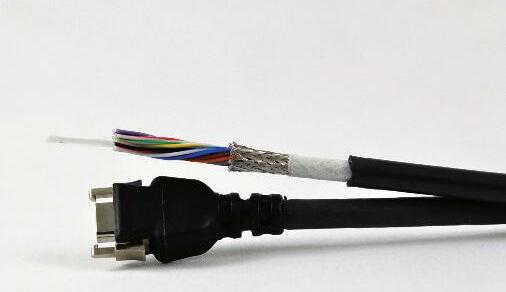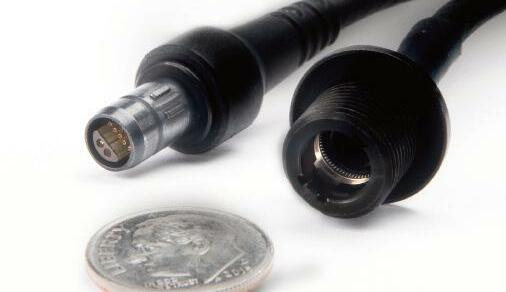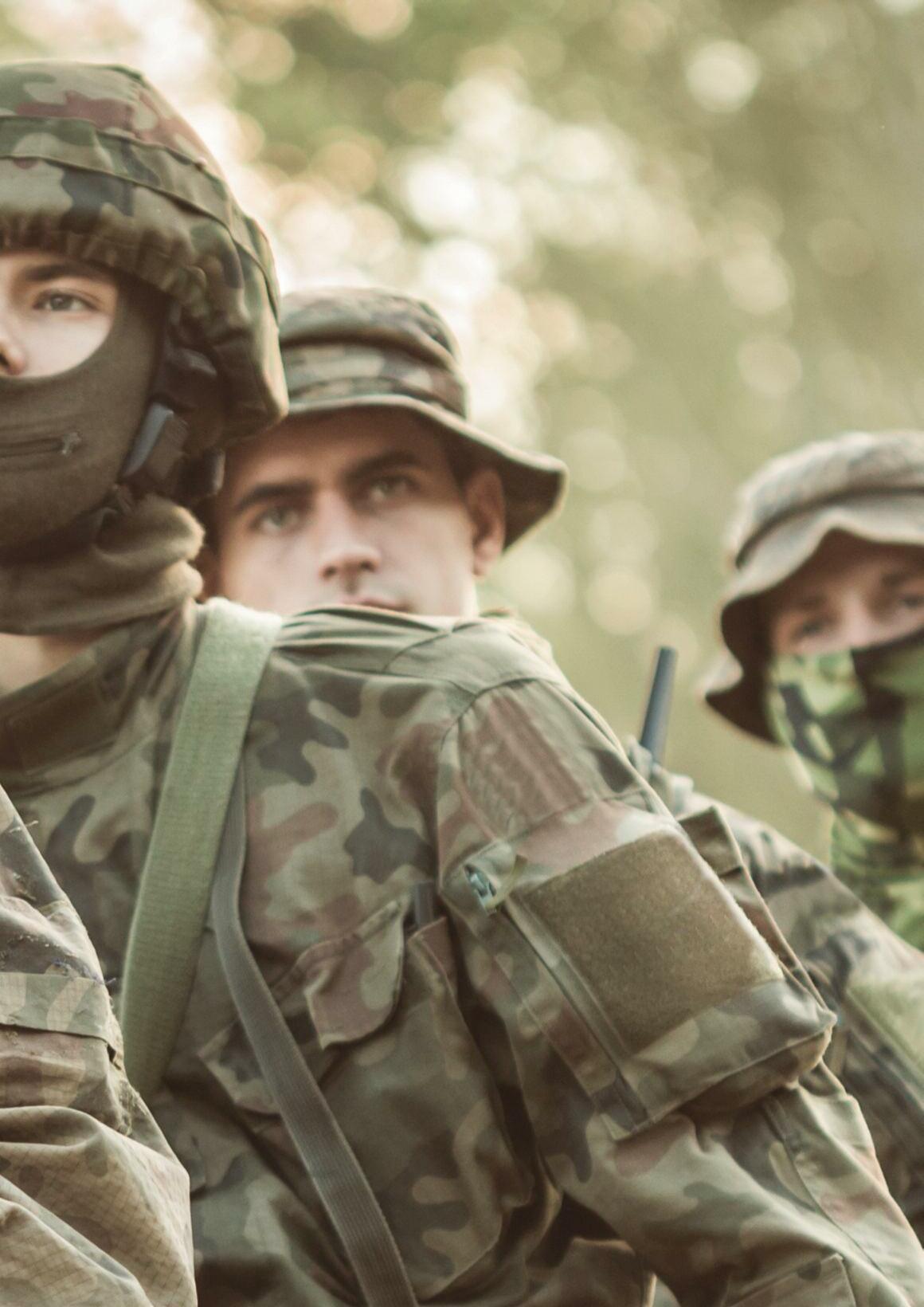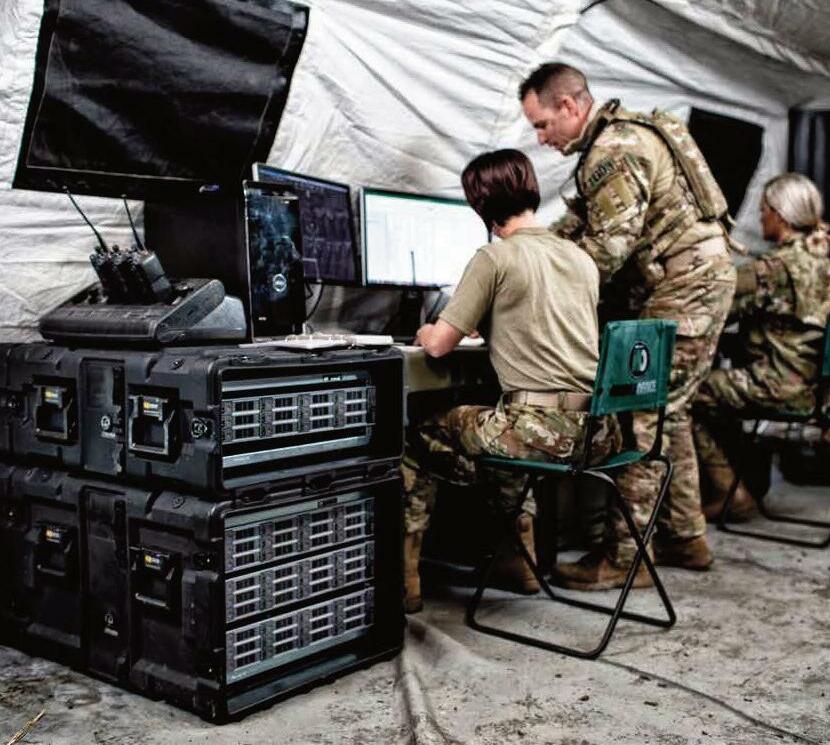
11 minute read
Omnetics - New Military and Aerospace Systems Drive Changes in Connector and Cable Design
NEW MILITARY AND AEROSPACE SYSTEMS DRIVE CHANGES IN CONNECTOR AND CABLE DESIGN
Advanced electronics in high-reliability systems are improving military and aerospace equipment to meet the significant challenges that lie ahead.
As new technologies expand and spread around the world, however, so has the potential threat from possible foes who have coopted modern consumer technologies, such as global positioning and information systems (GPIS), unmanned aerial vehicles (UAVs), and space systems, to serve their own purposes. Our technological battlefront now begins with military space equipment, surveillance, and position control. As such, our defense industry is developing improvements, expanding capabilities, and creating next-generation technical systems to provide immediate protection and prepare for potential threats. To that end, a new digital battlefield program has evolved.
We are seeing a wide range of technical methods emerge to meet these challenges, beginning with cutting-edge sensors for data image collection and distribution. There is a great need for mission and situation awareness monitoring with real-time data collection, faster signal processing, and central command guidance transmissions. The amount of time allotted for action and reaction, and for data control and usage, has diminished to a critical stage, causing electronic equipment and methods to be pushed beyond their barriers. In response, new cables and connectors are being designed and implemented to meet the application-specific needs of new military and aerospace systems.
Military satellite systems with wide-viewing capabilities will rapidly become a leading focus of technology expansion for surveillance and reconnaissance control. Multispectral surveillance cameras can provide images, while additional sensors monitor items such as weather, ocean levels, and other satellite and missile activities. Satellites also provide data for the new geospatial intelligence system (GEOINT), which features image analysis software that drives higher-speed digital signal data comparisons. Ruggedized, lightweight, high-density connectors with .050” and .025” pitch spacing are used to direct that data into the transmission modules that send it back to Earth.
UAVs designed for use at very low elevations, and typically controlled by earth-bound ships or ground troops, have added major advantages to our mission quality. UAVs provide a different value in surveillance, and offer close control for monitoring widearea moving target indicators (MTIs), ground targets, and airborne early warning (AEW) radar surveillance in support of theater missile to ground defense. The thorough package of electronics in today’s UAVs includes: directional control, GPIS referencing systems, high-resolution cameras, and ammunition launch and controls.

High-speed, lightweight electronics are making soldiers safer and military operations more successful.

fast-moving UAVs is extreme signal speed and integrity. Ruggedized, miniature connectors with small diameters and high-speed differential signal processing capabilities are essential for making cable connections between the data storage modules these systems rely on. They also enable some transmission-to-ground communications, but image and data modules are often quickly replaced at base stations on the ground. These applications have driven the use of ruggedized micro and nano sized latching connectors, and high-speed digital signal formats are used to handle speeds above 5Gb/s.
Phased array radar is rapidly eclipsing the old moving dish radar technology. These advanced systems use multiple transmission lobes (i.e., antennas) and send coordinated signals with slightly adjusted phase shifts to focus the radar beam directly at one point and define targets with serious resolution. Circuit speeds and logic systems continue to function more rapidly, allowing even the fastest missiles to be tracked electronically. The military industry is benefitting greatly from these systems due both to their increased capabilities and their ease of portability, which makes them even more versatile.
One of the keys to phased array radar is the use of multiple sets of high pin- and socket-count connectors capable of handling rapid signal processing to and from radar modules, which helps adjust the phase angle of the antennas to follow rapidly moving targets. The high-speed signal capacity of these connectors also provides improved intelligence, surveillance, and reconnaissance (ISR), as well as targeting, weapons delivery, and threat warning systems. Additionally, the use of digital-signal interconnections has become critical in reducing the vulnerability of radar to electronic countermeasures (ECMs). Electronically scanned arrays, along with sophisticated software, manage variations in environmental conditions and identify jamming attempts. Mass storage and portable Ethernet systems are some of the most rapidly evolving instruments in the mil/aero industry. Many requirements for handling data and processing signals must comply with Avionics Application Standard Software Interface (ARINC 653). This interface specification is aimed at ensuring that the aeronautics and space industries operate within a realtime operating system (RTOS) standard. The ability to host multiple applications of different software levels on the same hardware also provides universal performance while retaining a small physical size and low weight. The current focus is on routing both more and higher-speed signals into the main bank of equipment that stores the mass bulk of data being received. The new boards designed to enable this are highly condensed, lightweight, and rugged to suit the needs of equipment including the portable military electronic systems that are taken into battlefields. High pin-count edge-card connectors and mating cables are routed from detection and surveillance units back to the main system and provide the signal integrity and digital signal speeds that can prove critical during adverse battle conditions.
Portable Electronic Devices (PEDs) often specify micro-sized

circular connectors for highly portable modules that require the combination of power and differential signal processing within a single connector and cable. This often requires customized cable designs and careful attention to wire hook-up protocols to insure high signal integrity and offers up to 10Gb/s. Power levels depend upon the power pin and the size of the power wire specified. The number of signal pins can be designed to accommodate multiple digital signals, and metal shells are often used to provide 100% shielding from the cable to the connector.
Military robotics are used in remote battle situations to analyze, predict, report, and deliver a wide array of information. For example, the military employs both front line and perimeter IED detection for carrying pack loads and remote ground ammunition-firing systems. The Talon, by Qinetiq, is easily transported to battlefronts and can operate in adverse weather and terrain. This robot travels rapidly carrying customized electronic equipment that allows behind-the-front control and delivers rapidly even in very rugged conditions. It also has the capability of firing weaponry from its own chassis. Cable and connectors utilized in these types of equipment must be extremely rugged and waterproof, and efficiently distribute power and remote directional control simultaneously with image capture and transmission.
Many of the ground robotic connectors for military and aerospace applications require the combination of low weight and extreme reliability when exposed to shock and vibration. Special pin and socket systems using spring beryllium copper or twisted steel are used to retain constant contact during these events. In addition, each pin/socket set must be plated with nickel and then gold to help retain contact reliability over long exposures. Test specifications are defined to qualify and insure reliable performance. Many applications will require metal back shells and braided metal shielding over the cable to prevent both damage and EMI (electromagnetic interference shielding). As signal speeds increase and as more electronic packages are crammed into tighter spaces, this is becoming more and more critical.

Soldier-worn electronic systems are being deployed extensively. This is the era of the high-technology digital battlefield. Constant communication with each ground trooper and biomonitoring are critical to protect the personnel. Higher speed signals, again, become life- supporting as well as efficient for critical data sharing from satellites, unmanned vehicles, and ground central. Munition directions from the ground team will be processed at the soldier with his onboard computer that is linked with a military GPS satellite above.
The connectors and cables must meet three key criteria to maintain these functions in a wearable format. They must be reliable, weigh as little as possible, and provide ideal signal integrity at all times. Each new cable and connector design is reviewed for how and where it fits on the soldier’s equipment pack and uniform. It is then fabricated and tested for the electrical and mechanical specifications the soldier will

experience in the field. Finally, the new cable and connectors are installed into his system. That is not always the last step, however. The military must be the critical element in the “useable” features of each new cable and connector. Redesigns are an acceptable way to refine and improve the cable and connectors, much as it is for the rest of his equipment pack.
Adapting today’s connectors to new military and aerospace requirements has become a serious process that goes beyond the older “quote-a-spec” method of the past. As seen in the wide range of applications above, one connector design, size, and shape does not fit all. More often, the designer must review the combined details of electronics, mechanical use, and survival to adapt connectors to fit and perform in these advanced technologies. Requirements vary from mobile instruments, ground troop electronics, and even military space systems.

This process of configuring connectors to application-specific functions often begins with a review of the equipment to which the connectors will be applied. Standard and COTs connectors can be considered and analyzed to find a close fit to the new application. During early stages of design, COTs connectors can be used in prototype circuits, which can save time and cost of development. There are significant advantages when the COTs, or even small changes to the COTs connectors, will suffice. Connectors with previous military-quality materials and processes can shorten the design cycle time and give early expectations of lifespan and performance. When changes in shape or size are required, a solid model of the new design can be quickly completed by the connector supplier and sent to the system design team. This can begin an online work session that also helps to get the design right early in the process. After design completion, connector fabrication can be transferred directly to smart tooling machines. Planning for the cable as signal speeds increase can be very critical. Higher speed differential signal processing pushes the limits of standard cables in our industry. Signal length, attenuation, and skew of differential signals must all be planned, prescribed, and attended to in the cable design. In the past, we planned for the resistance and potential crosstalk of signals within a cable. Now, we must prepare for high-speed different electron propagation delays between signal lines that can cause skew, and plan for inductive reactance, as well as learn new ways to prepare and test the cable before it is attached to the connector. Some methods are evolving by use of TDR (time delay reflection) instruments or by sending complete signals down the new cable and reviewing eye diagrams that exhibit noise, jitter, and skew of the signal as it actually runs through the cable.
Final electrical and mechanical testing can assure good performance of the completely assembled connector to the cable harness. Field-proof testing and certification will require building enough of the products to run the group through combinations of mechanical, environmental, and signal integrity performance. Shipping new cable and connectors for military equipment has become a detailed and important step. The supplier must remain critically aware of the many new expectations of the connector systems of today and tomorrow.
www.omnetics.com
Oxley and Astute Launch New UK Distribution Partnership
Oxley Group and Astute Electronics are delighted to announce a new UK distribution partnership.
Under this agreement, commencing from November 2022, Astute will represent Oxley across the electronic components range including EMI filters, interconnect solutions and LED panel lamps. This new UK agreement builds on a long relationship between Oxley Group and Astute in Germany.
Electronics specialist Astute has 30 years’ experience in supplying components to the aerospace and defence markets. This partnership will capitalise on this experience to enhance the service to Oxley’s UK customers through improved product expertise and design support as well as the swift fulfilment of deliveries. The Astute team, headquartered in Stevenage with sites across the globe, has a dedicated design support service with experienced product managers and application engineers as well as the backing of the wider Oxley team. Agility, Passion & Innovation have a great synergy with Oxley, we are very confident that this partnership will ensure customers in the UK receive the best possible support and we are looking forward to developing a prosperous relationship moving forward.
Stewart Burns, Passive and Discrete BDM, Astute added,
‘Astute is delighted to partner with Oxley, the product range fits perfectly with the Astute portfolio, Oxley, like Astute is heavily invested in ensuring long-term supply for the lifetime of all customer projects. Excellent customer relationships and a full design and test facility ensures that the Astute & Oxley partnership can facilitate initial design, evaluation of a new or existing requirement or the delivery of off the shelf EMI Filter, LED Lamp or Interconnect solutions.
For more information visit:

PORTABLE IT PROTECTION


SUPERMACTM
• Payload: 11-90 Kg • Fully Configurable
BLACKBOX
• Payload: 9-45 Kg • Off-the-Shelf
SUPER-V
• Payload: 36-77 Kg • Off-the-Shelf • Rechtecklochung Watch video
NEW! 30” DEEP RACK CASES
SAFELY TRANSPORT DEEPER SIZED SERVERS
The new Peli Rack Cases with 30” deep frame are the right solution to protect long sized rack mountable equipment. Available in 3U, 5U, 7U and 9U sizes. The 30” depth not only provides space for servers with a greater length, but also for one or more units that can be mounted on the same rack level; saving space and reducing payload. The greater depth also leaves more space for switches, connectors and cables, which are easily accessible from the rear of the case thanks to its double-end design.
GUARANTEE OF EXCELLENCE










